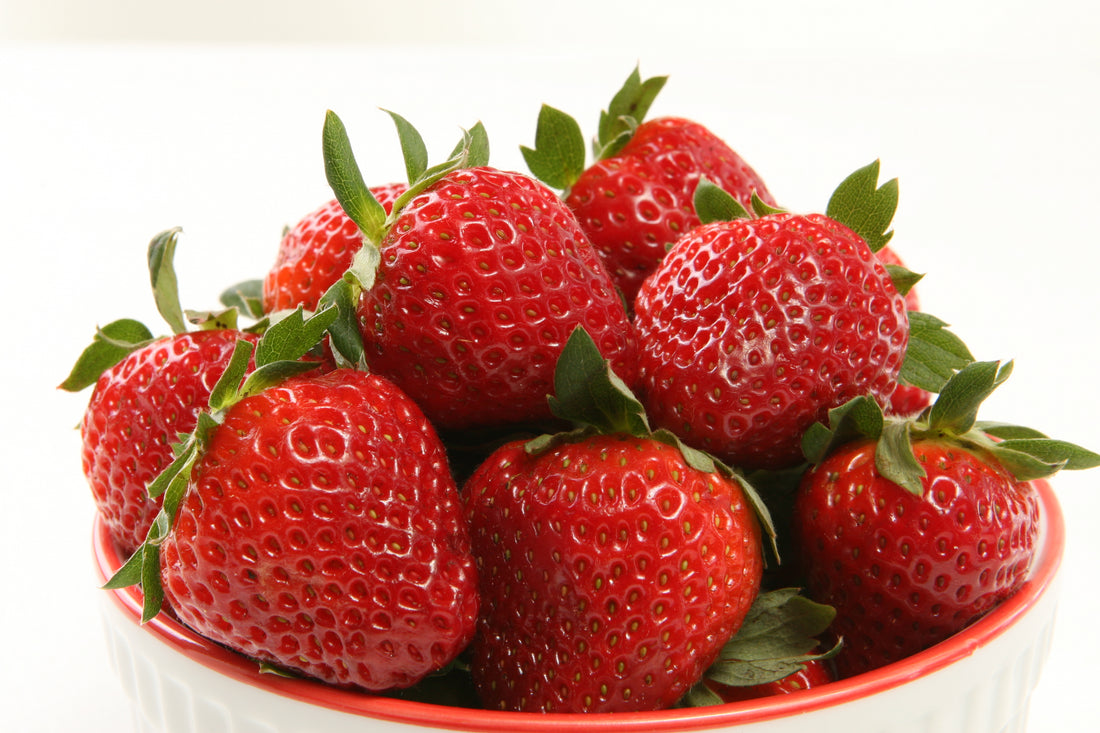Strawberries are an easy care fruit for the home gardener. Ideally the soil should be quite rich and well drained with a good mulch around the plants to help keep the ground moist, suppress weeds and protect the fruit. Weedmat or black plastic can be used instead of mulch and weedmat is preferable as it allows more air circulation and water penetration. It also breathes so does not sour the soil as plastic can. Remember that black plastic or black weedmat will raise the soil temperature so earlier flowering may occur. If an organic mulch is preferred, rice hulls are excellent.
Strawberries can also be grown in large pots or tubs if space is limited. Strawberries like a slightly acidic soil with lots of organic matter and plenty of water during summer. Strawberries need full sun for most of the day.
Good yields can be obtained by mixing decayed pine needles with lots of old, composted cow or sheep manure. Dig this mix into the top 20cm of soil, sprinkle on some blood and bone mixed with sulphate of potash (at a ratio of 5 parts of blood & bone to 1 part of sulphate of potash), and water well. Leave at least a week before planting.
There are a few types of weeping hose on the market and this is a good way of irrigating strawberries in the home garden, as it is easy to run under the mulch or sheeting. Strawberries need at least 25mm of water per week from spring until the end of the season.
Plant in late winter or early spring and allow about 30cm between plants. Take care not to plant them too deeply or the crown of the plant will rot. Routine feeding with a liquid fertiliser will help boost fruit production. Be sure to remove all old or discoloured leaves as they may harbour mites in the warmer months. To continue good fruit production, runners must be removed as they develop. Fruit should be picked daily if possible and any damaged or rotting fruit should be removed and disposed of. Fruit should be allowed to ripen on the plant so some bird protection may be needed. Fruit picked when under ripe will colour, but will not sweeten.
Snail bait will probably be necessary to stop snails, slugs and slaters from attacking the fruit. Remember to keep the weeds down during the warmer months, check for pests and water well. Cut plants back in January, removing all leaves, but leaving the crown of the plant intact, and fertilise with a mixture of 5 parts of blood and bone to 1 part of sulphate of potash, but do not place this too close to the crown of the plants. Water well over the next couple of weeks, and they will bear a good second crop in March. Cut back hard in April, removing all the leaves to within 2cm of the crown. Remove all leaf litter and any organic mulch or plastic sheeting. Spray in May and August with Bordeaux or Kocide. Fertilise in late September or early October and replace the mulch or plastic sheeting.
Foliar feeding with a seaweed product is beneficial during peak fruiting times. Plants should produce good fruit for 2 or 3 seasons and then be replaced with certified, virus-free stock.
Ann Costelloe

